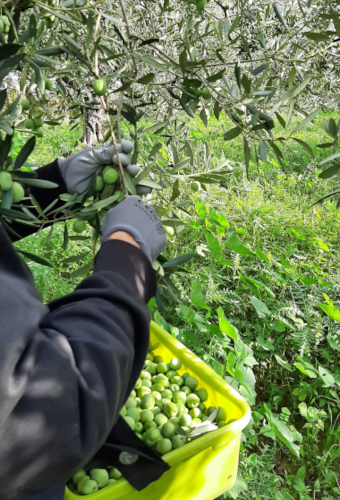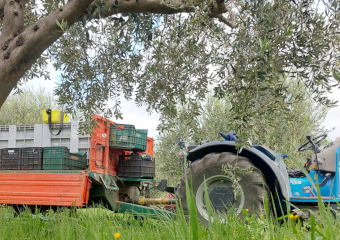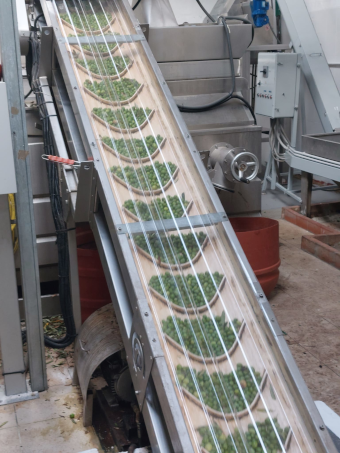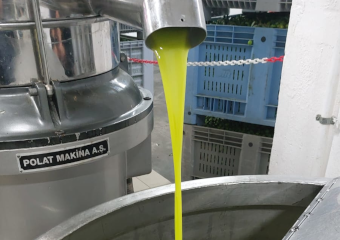Processing & Conservation
The processing of the olives already begins during the harvest. Although the disciplinary procedure of the "Valle del Belìce" oil allows the use of machines for facilitated and/or mechanical harvesting, provided that contact of the drupes with the ground is avoided during the operation, the G. D'Angelo farm has chosen to favour quality by plucking its olives exclusively by hand with shoulder baskets. This technique is slow compared to others (such as the use of machines and/or harvesting nets put on the ground under olive trees) and therefore it has a much higher cost in terms of labour for the same harvested product, but it is the only one that does not cause any damage to the drupes and avoids their contact with the ground, factors that would not only degrade the organoleptic and nutritional characteristics of the extracted oil but would also reduce their preservation time.

Once the shoulder basket is filled, the operator pours the harvested olives directly into perforated crates which will be transported, at the end of the day, to an oil mill in the same municipality where the farm is located. The crates will be kept there in cool and airy environments until the milling phase, carried out within a few days from the harvesting in order to avoid chemical alterations which would lead to an increase in the degree of acidity and oxidation of the oil.

Cold milling, obligatorily preceded by washing and defoliation of the drupes, takes place at temperatures not exceeding 27°C.
The conservation of the oil before packaging is carried out in special stainless steel silos that keep it away from air and light and, at the same time, allow it to decant naturally. In fact, Selinòce does not undergo any artificial filtration treatment before being placed in the sales circuit but is simply left to decant for a few weeks. It is therefore inevitable that a small quantity of pulp and stone microparticles remain in suspension and that the natural settling process continues in the following months inside the packaging can. The presence of a slight sediment on the bottom of the can confirms the genuineness of the oil and is absolutely not an indication of a deterioration process in progress.

To preserve the physical, chemical, protein and nutritional characteristics of the oil over time after purchase, it is recommended to keep the cans away from excessive temperatures (a constant temperature of around 14-15°C is recommended).




.png)